
– By Medha Shukla
– Intern IPPCS’21
The Asian continent is a locale within which reside emerging powers surviving within the context of anarchy, competition, and interdependence. This region has a composition of countries which are vital players of international politics with their own strategic strengths and interests. While there are three major powers in the region- India, Japan, and China- ASEAN countries along with Russia, which is regaining a foothold, are becoming eminent powers within regional organizations. Amongst the regional superpowers India shares close and cordial relations with Japan. Certain records claim this partnership to have existed since, prior to India’s independence, in one form or another. With China’s desire to become a global, leading power many have seen the bilateral ties between Japan and India as a balancing act to keep regional power relations in check. While China’s rise is a common concern that both countries battle with, the relationship is significant to both owing to deeper connections.
The first exchange between the two nations was cultural in nature, namely, the introduction of Buddhism in Japanese society. This exchange of the 6th century flourished into a stronger bond via the connection’s eminent Indian personalities like Judge Radha Binod Pal, Netaji Subhash Chandra Bose etc. established with the country and their counterparts. Additionally, India’s absence, as a newly independent nation, at the San Francisco Conference was deeply symbolic. Alternatively, India had separately signed a peace treaty with Japan which defined the bilateral relations between the two.
Formally established on 28th April 1952 the diplomatic relations between the two nations have since then been cordial and consistent. It was in 1991 that the ties between the two were tested resulting in Japan standing by India during its crisis of balance payment. A decade later a ‘Global Partnership’ was established following PM Yoshiro Mori’s visit. As the Indian economy grew many economic opportunities were created which lured the Japanese corporate sector, thus became a key string that strengthened the bilateral relations in contemporary times. Fourteen years later, September 2014, the bilateral bond was upgraded to a ‘Special Strategic and Global Partnership’, summits under which continue to be held. Leaders of both countries have been vocal on their common goal of ensuring a free and open Indo-Pacific. This forms part of the Japan-India Vision Statement which is a guide for the new era relations between the two. The relationship between the two nations is multi-faceted in nature and is driven by forces of functional needs (i.e., complementary economies), interdependence, and mutual gain. Many analysts agree that despite having so much in common bilateral ties remain under materialized. While India is one of the top beneficiaries of Japanese investments within the region, full potential within the Official Development Assistance (ODA) domain is still to be achieved. Key engagement areas for the future include biotechnology, environmental energy, nuclear energy, and other non-traditional domains such as climate change.
The bilateral ties of India and Japan make for an interesting paradox in the realm of international relations. Two countries that do not have major disruptions, e.g., wars, sanctions, political fallouts, prior to and since establishment of relations the potential of their partnership remains to be discovered to date. Since his appointment PM Modi has closely worked alongside his Japanese counterpart in furthering the bilateral relations established by his predecessor. It only helped that the two leaders, Modi and Abe, developed strong personal relations over shared visions. Japan is currently a technological powerhouse, also capable of providing funding, which can immensely help India in developmental and infrastructural aspects. Alongside economic progress ministerial dialogues between defence personnel and national security advisors have also been held frequently. A landmark event in this domain is the proposed deal for the procurement of Japan’s US-2 amphibian aircrafts.
Apart from bilateral ties the two nations are also part of a trilateral dialogue along the United States. These three countries further share another stage i.e., the QUAD, a relatively new grouping with four member nations as of now. Marmite cooperation between the allies has taken place in the shape of the annual India-US Malabar exercise, which is now being extended to all three defence wings. As mentioned above, the deep camaraderie shared between Abe and Modi has been a driving force between the growing ties in the past few years, therefore the change in Japanese leadership brought with it certain uncertainties. While on the onset PM Yoshihide Suga seems to have a similar outlook towards ties with India as his predecessor, strings from his past suggest that he might practice a non-confrontational approach towards China. In his first visit to the United States, he has spoken positively towards Japan’s engagement in the Indo-Pacific region, this preview sets an optimistic stage for his future visit to India.
While the balancing strategy against China’s ‘unilateral’ actions is expected to continue owing to Abe’s influence over the top ministry and Suga, who resonates with Abe’s ideology to a greater extent. The key positions in the cabinet are held by personnel who are sure to ensure continuity of cooperation with India and fellow QUAD members. It is LDP’s Secretary General, Toshihiro Nikai’s views and influences from Suga’s hometown Yokohama that pose a slight worry to leaders in New Delhi and Washington. These two factors are expected to be the voices favoring China, but against this stands the public opinion against China that has grown recently owing to the Galwan valley clashes. A key aspect for India will be to ensure continuation of the third country projects undertaken along with Japan. Also, The Association of Southeast Asian Nations outreach policy is integral to creating an integrated region that stands united against China’s expansionist policies. Unlike Abe, Suga is not an active participant in the domain of foreign policy and therefore might place it as a complementary aspect to domestic politics. Therefore, it will become imperative for India to identify its lobby in Japan and interact with key domestic policy drivers.
Suga recently shared his thoughts on relations with India in a video message at the inaugural ceremony of Varanasi Cooperation and Convention Centre (VICCC). In his long message Suga emphasized on the symbolism of the VICCC and his views on future areas of cooperation “… Japan and India will work to overcome this challenge [COVID-19] and make utmost efforts to further develop bilateral ties under special strategic and global partnerships through cooperation in areas such areas as green society, digital, cyber, healthcare and enhancing connectivity.”. So far there are no red flags that might hinder this progressing relation, the upcoming QUAD summit will further provide clarity on the changes, if any, that the new leadership will bring along. Careful observation along with identifying the various opportunities of collaboration with Japan are key to establishing this new version of India-Japan relations.
References
Bagchi, Indrani. ‘Suga in Japan saddle, India will need to tweak template’. 19th September 2020. 10 September 2021. <https://timesofindia.indiatimes.com/india/india-eyes-more-ambitious-approach-to-japanese-business-as-new-pm-takes-over/articleshow/78194474.cms>.
Correspondent, HT. ‘India, Japan share same fundamental values’: PM Yoshihide Suga. 15 July 2021. 10 September 2021. <https://www.hindustantimes.com/india-news/india-japan-share-same-fundamental-values-pm-yoshihide-suga-101626350228388.html>.
India, MInistry of External Affairs. “A Brief on India Japan relations.” February 2020. 11 September 2021. <https://www.mea.gov.in/Portal/ForeignRelation/India-Japan_Bilateral_Brief_feb_2020.pdf>.
“‘India-Japan: Time to sieze new opportunities’.” 2020. FICCI . 11 September 2021. <https://www.jcci.or.jp/Report_India-Japan%20Time%20to%20Seize%20New%20Opportunities.pdf>.
Kesavan, K. V. India and major powers: Japan . 09 August 2019. 11 September 2021. <https://www.orfonline.org/expert-speak/india-and-major-powers-japan-54248/>.
Mathur, Arpita. “India-Japan Relations.” n.d. RSIS Mobograph Vol 23. 10 September 2021. <https://www.rsis.edu.sg/wp-content/uploads/2000/01/Monograph23.pdf>.

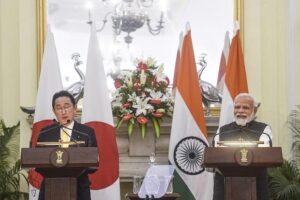

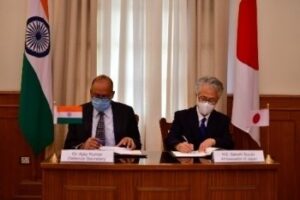
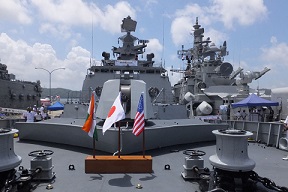
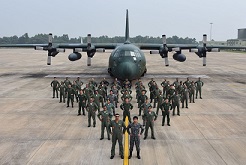



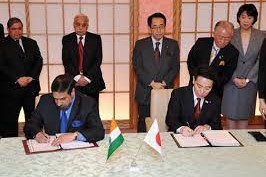

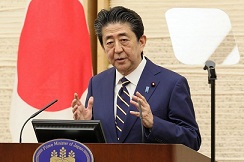
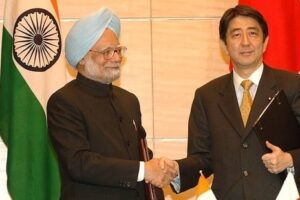

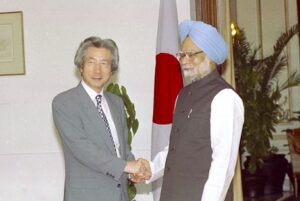
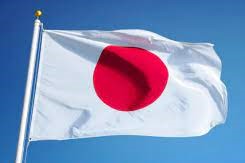
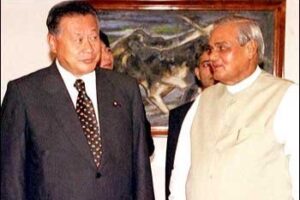
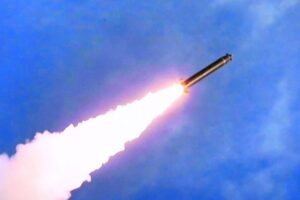
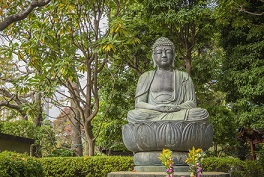



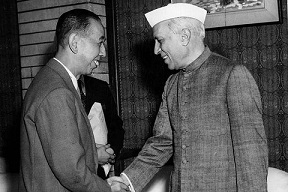



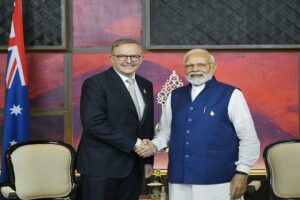



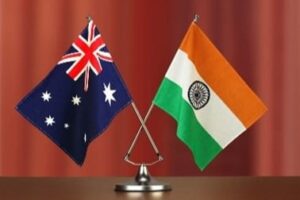
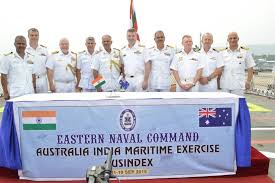

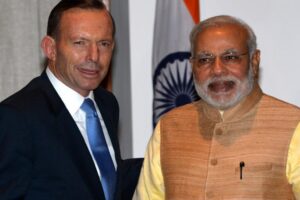





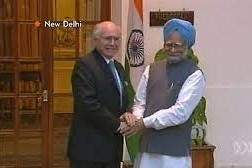
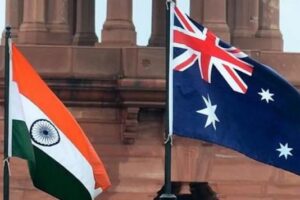
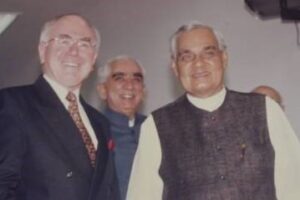

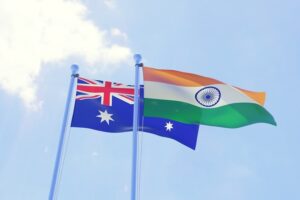

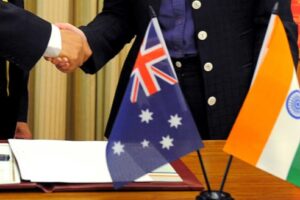

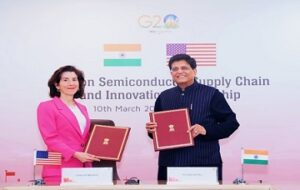
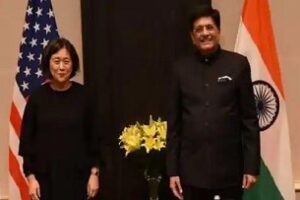
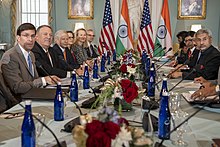
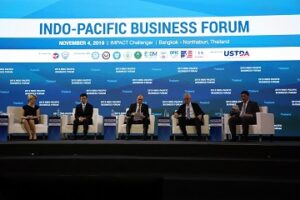
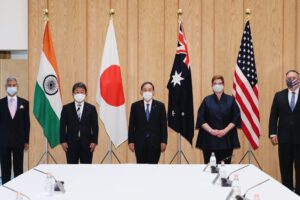

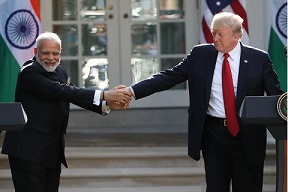
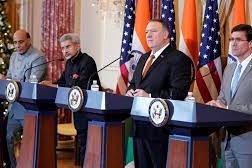
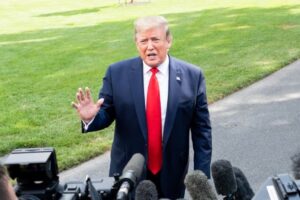
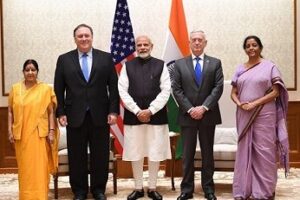
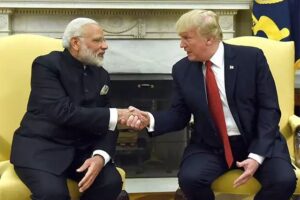
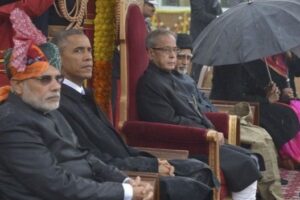

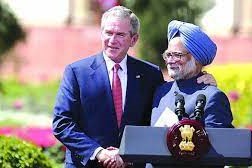
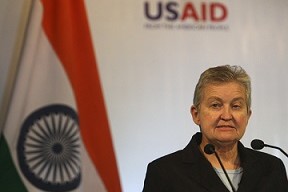
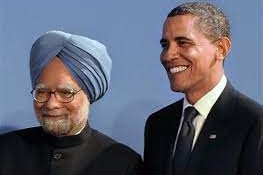
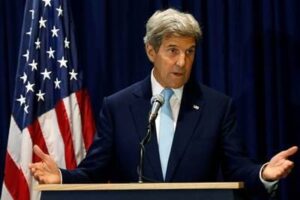

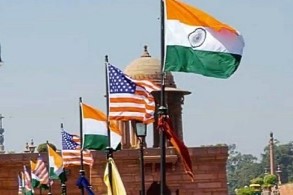
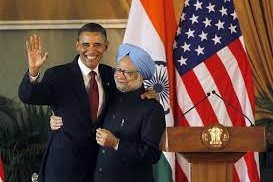
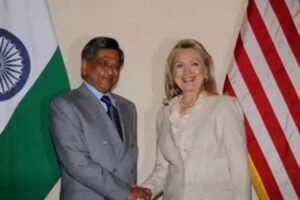
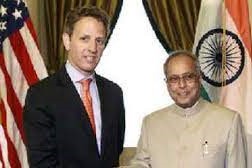
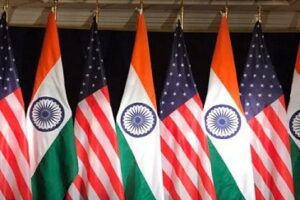
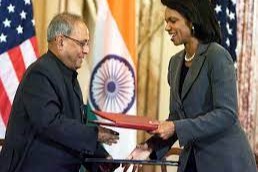

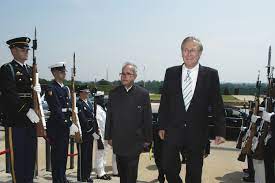


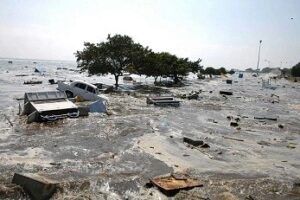

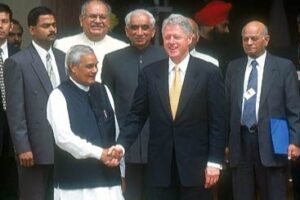
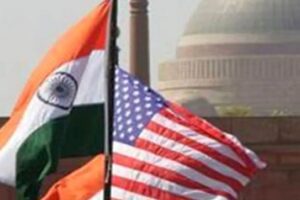

 onducted a total of five underground nuclear tests, breaking a 24-year self-imposed moratorium on nuclear testing. Pakistan followed, claiming 5 tests on May 28, 1998, and an additional test on May 30. The unannounced tests created a global storm of criticism, as well as a serious setback for decades of U.S. nuclear nonproliferation efforts in South Asia. On May 13, 1998, President Clinton imposed economic and military sanctions on India, mandated by Section 102 of the Arms Export Control Act (AECA), and applied the same sanctions to Pakistan on May 30. Some effects of the sanctions on India included: termination of $21 million in FY1998 economic development assistance; postponement of $1.7 billion in lending by the International Financial Institutions (IFI), as supported by the Group of Eight (G-8) leading industrial nations; prohibition on loans or credit from U.S. banks to the government of India; and termination of Foreign Military Sales under the Arms Export Control Act. Humanitarian assistance, food, or other agricultural commodities are excepted from sanctions under the law.
onducted a total of five underground nuclear tests, breaking a 24-year self-imposed moratorium on nuclear testing. Pakistan followed, claiming 5 tests on May 28, 1998, and an additional test on May 30. The unannounced tests created a global storm of criticism, as well as a serious setback for decades of U.S. nuclear nonproliferation efforts in South Asia. On May 13, 1998, President Clinton imposed economic and military sanctions on India, mandated by Section 102 of the Arms Export Control Act (AECA), and applied the same sanctions to Pakistan on May 30. Some effects of the sanctions on India included: termination of $21 million in FY1998 economic development assistance; postponement of $1.7 billion in lending by the International Financial Institutions (IFI), as supported by the Group of Eight (G-8) leading industrial nations; prohibition on loans or credit from U.S. banks to the government of India; and termination of Foreign Military Sales under the Arms Export Control Act. Humanitarian assistance, food, or other agricultural commodities are excepted from sanctions under the law. 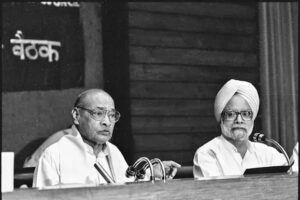
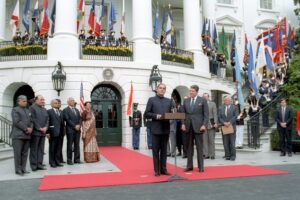
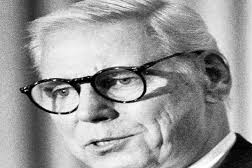


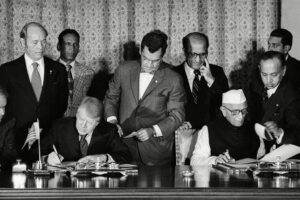
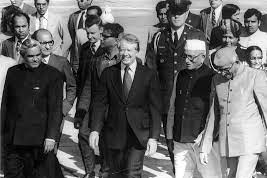

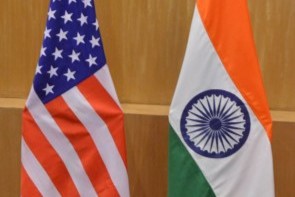

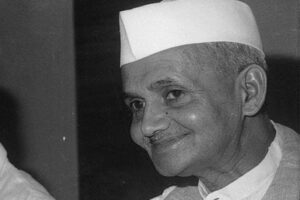

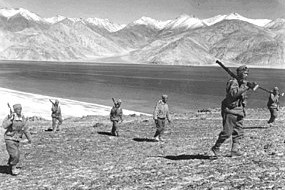
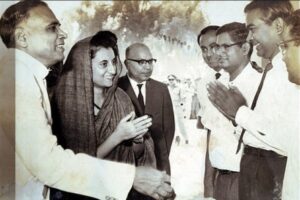
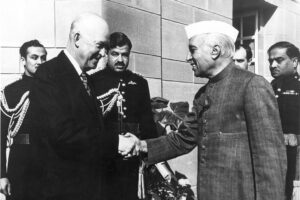

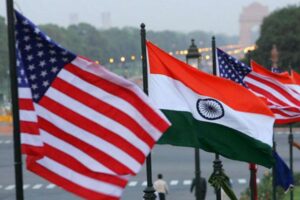
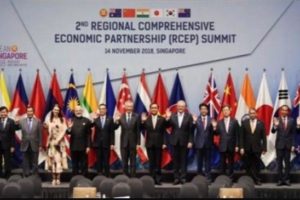 The first ministerial level meeting of QUAD was held on the sidelines of the United Nations General Assembly in New York. Before this, the QUAD had
The first ministerial level meeting of QUAD was held on the sidelines of the United Nations General Assembly in New York. Before this, the QUAD had AusIndEx is an exercise between India and Australia which was first held in 2015.The Australian
AusIndEx is an exercise between India and Australia which was first held in 2015.The Australian 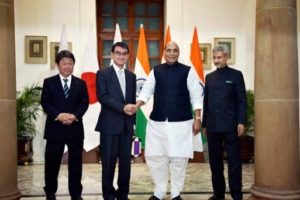



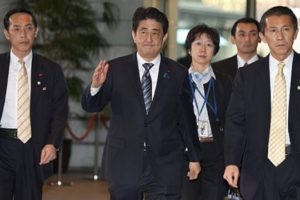



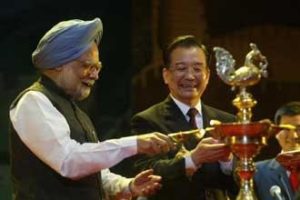 On recommendations of the Japanese government, the four countries met at Manila, Philippines for ASEAN Regional Forum (ARF) originally, but also ended up having a meeting of what we call the first meeting of four nation states on issues of
On recommendations of the Japanese government, the four countries met at Manila, Philippines for ASEAN Regional Forum (ARF) originally, but also ended up having a meeting of what we call the first meeting of four nation states on issues of 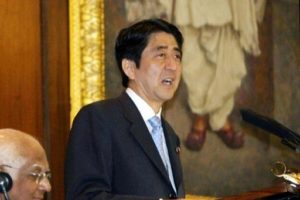 On his official visit to India, Japanese PM Mr. Shinzo Abe reinforced the ties of two nations, i.e., Japan and India with his famous speech about
On his official visit to India, Japanese PM Mr. Shinzo Abe reinforced the ties of two nations, i.e., Japan and India with his famous speech about  In 2007, Japanese President Shinzo Abe resigned from his post citing health reasons. This had a significant impact on QUAD as he was the architect & advocate of QUAD. His successor, Yasuo Fukuda, did not take up QUAD with such zeal leading to dormancy of the forum. (
In 2007, Japanese President Shinzo Abe resigned from his post citing health reasons. This had a significant impact on QUAD as he was the architect & advocate of QUAD. His successor, Yasuo Fukuda, did not take up QUAD with such zeal leading to dormancy of the forum. (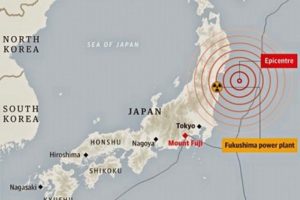 Japan earthquake and tsunami of 2011, also called Great Sendai Earthquake or Great Tōhoku Earthquake, was a 9.0 magnitude earthquake which struck below the floor of the Western Pacific at 2:49 PM. The powerful earthquake affected the northeastern coast of Honshu, Japan’s main island, and also initiated a series of large tsunami waves that devastated coastal areas of Japan, which also led to a major nuclear accident. Japan received aid from India, US, Australia as well as other countries. US Navy aircraft carrier was dispatched to the area and Australia sent search-and-rescue teams.
Japan earthquake and tsunami of 2011, also called Great Sendai Earthquake or Great Tōhoku Earthquake, was a 9.0 magnitude earthquake which struck below the floor of the Western Pacific at 2:49 PM. The powerful earthquake affected the northeastern coast of Honshu, Japan’s main island, and also initiated a series of large tsunami waves that devastated coastal areas of Japan, which also led to a major nuclear accident. Japan received aid from India, US, Australia as well as other countries. US Navy aircraft carrier was dispatched to the area and Australia sent search-and-rescue teams. 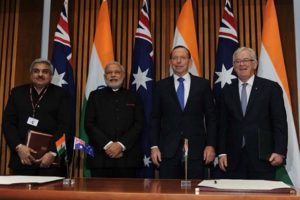 India and Australia signed the
India and Australia signed the  The India-Japan Agreement for Cooperation in the Peaceful Uses of Nuclear Energy was signed on 11 November, 2016 and came into force on 20 July, 2017 which was representative of strengthening ties between India and Japan. Diplomatic notes were exchanged between Dr. S. Jaishankar and H.E. Mr. Kenji Hiramatsu, Ambassador of Japan to India. (
The India-Japan Agreement for Cooperation in the Peaceful Uses of Nuclear Energy was signed on 11 November, 2016 and came into force on 20 July, 2017 which was representative of strengthening ties between India and Japan. Diplomatic notes were exchanged between Dr. S. Jaishankar and H.E. Mr. Kenji Hiramatsu, Ambassador of Japan to India. (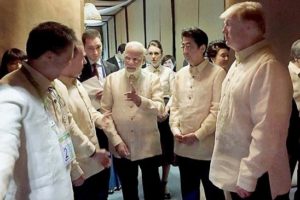 The foreign ministry
The foreign ministry The Officials of QUAD member countries met in Singapore on November 15, 2018 for consultation on regional & global issues of common interest. The main discussion revolved around connectivity, sustainable development, counter-terrorism, maritime and cyber security, with the view to promote peace, stability and prosperity in the
The Officials of QUAD member countries met in Singapore on November 15, 2018 for consultation on regional & global issues of common interest. The main discussion revolved around connectivity, sustainable development, counter-terrorism, maritime and cyber security, with the view to promote peace, stability and prosperity in the  The 23rd edition of trilateral Malabar maritime exercise between India, US and Japan took place on 26 September- 04 October, 2019 off the coast of Japan.
The 23rd edition of trilateral Malabar maritime exercise between India, US and Japan took place on 26 September- 04 October, 2019 off the coast of Japan.  After the first ministerial level meeting of QUAD in September, 2019, the senior officials of US, Japan, India and Australia again met for consultations in Bangkok on the margins of the East Asia Summit. Statements were issued separately by the four countries. Indian Ministry of External Affairs said “In statements issued separately by the four countries, MEA said, “proceeding from the strategic guidance of their Ministers, who met in New York City on the sidelines of the UN General Assembly recently, the officials exchanged views on ongoing and additional practical cooperation in the areas of connectivity and infrastructure development, and security matters, including counterterrorism, cyber and maritime security, with a view to promoting peace, security, stability, prosperity in the Indo-Pacific region.”
After the first ministerial level meeting of QUAD in September, 2019, the senior officials of US, Japan, India and Australia again met for consultations in Bangkok on the margins of the East Asia Summit. Statements were issued separately by the four countries. Indian Ministry of External Affairs said “In statements issued separately by the four countries, MEA said, “proceeding from the strategic guidance of their Ministers, who met in New York City on the sidelines of the UN General Assembly recently, the officials exchanged views on ongoing and additional practical cooperation in the areas of connectivity and infrastructure development, and security matters, including counterterrorism, cyber and maritime security, with a view to promoting peace, security, stability, prosperity in the Indo-Pacific region.” US 2+2 Ministerial Dialogue was held on 18 December, 2019, in Washington DC. Secretary of State Michael R. Pompeo and Secretary of Defense Mark T. Esper will host Indian Minister of External Affairs Dr. S. Jaishankar and Minister of Defense Shri Rajnath Singh. The discussion focussed on deepening bilateral strategic and defense cooperation, exchanging perspectives on global developments, and our shared leadership in the Indo-Pacific region.The two democracies signed the Industrial Security Annex before the 2+2 Dialogue. Assessments of the situation in Afghanistan, Pakistan, Nepal, Sri Lanka, and the Indian Ocean region in general were shared between both countries. (
US 2+2 Ministerial Dialogue was held on 18 December, 2019, in Washington DC. Secretary of State Michael R. Pompeo and Secretary of Defense Mark T. Esper will host Indian Minister of External Affairs Dr. S. Jaishankar and Minister of Defense Shri Rajnath Singh. The discussion focussed on deepening bilateral strategic and defense cooperation, exchanging perspectives on global developments, and our shared leadership in the Indo-Pacific region.The two democracies signed the Industrial Security Annex before the 2+2 Dialogue. Assessments of the situation in Afghanistan, Pakistan, Nepal, Sri Lanka, and the Indian Ocean region in general were shared between both countries. (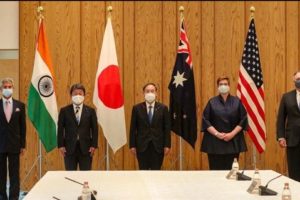 The foreign ministers of QUAD continued their discussions from the last ministerial level meeting in 2019, on 6 October, 2020. While there was no joint statement released, all countries issued individual readouts. As per the issue readout by India, the discussion called for a coordinated response to the challenges including financial problems emanating from the pandemic, best practices to combat Covid-19, increasing the resilience of supply chains, and enhancing access to affordable vaccines, medicines and medical equipment. There was also a focus on maintaining stability in the Indo-Pacific region amidst growing tensions. Australian media release mentions “We emphasised that, especially during a pandemic, it was vital that states work to ease tensions and avoid exacerbating long-standing disputes, work to counter disinformation, and refrain from malicious cyberspace activity. Ministers reiterated that states cannot assert maritime claims that are inconsistent with international law, particularly the United Nations Convention on the Law of the Sea (UNCLOS).”
The foreign ministers of QUAD continued their discussions from the last ministerial level meeting in 2019, on 6 October, 2020. While there was no joint statement released, all countries issued individual readouts. As per the issue readout by India, the discussion called for a coordinated response to the challenges including financial problems emanating from the pandemic, best practices to combat Covid-19, increasing the resilience of supply chains, and enhancing access to affordable vaccines, medicines and medical equipment. There was also a focus on maintaining stability in the Indo-Pacific region amidst growing tensions. Australian media release mentions “We emphasised that, especially during a pandemic, it was vital that states work to ease tensions and avoid exacerbating long-standing disputes, work to counter disinformation, and refrain from malicious cyberspace activity. Ministers reiterated that states cannot assert maritime claims that are inconsistent with international law, particularly the United Nations Convention on the Law of the Sea (UNCLOS).”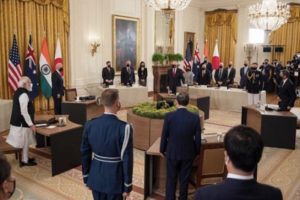 On September 24, President Biden hosted Prime Minister Scott Morrison of Australia, Prime Minister Narendra Modi of India, and Prime Minister Yoshihide Suga of Japan at the White House for the first-ever in-person Leaders’ Summit of the QUAD. The leaders released a Joint Statement which summarised their dialogue and future course of action. The regional security of the Indo-Pacific and strong confidence in the ASEAN remained on the focus along with response to the Pandemic.
On September 24, President Biden hosted Prime Minister Scott Morrison of Australia, Prime Minister Narendra Modi of India, and Prime Minister Yoshihide Suga of Japan at the White House for the first-ever in-person Leaders’ Summit of the QUAD. The leaders released a Joint Statement which summarised their dialogue and future course of action. The regional security of the Indo-Pacific and strong confidence in the ASEAN remained on the focus along with response to the Pandemic. 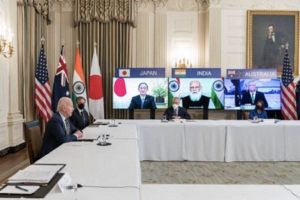 The QUAD Vaccine Partnership was announced at the first QUAD Summit on 12 March 2021 where QUAD countries agreed to deliver 1.2 billion vaccine doses globally. The aim was to expand and finance vaccine manufacturing and equipping the Indo-Pacific to build resilience against Covid-19. The launch of a senior-level QUAD Vaccine Experts Group, comprised of top scientists and officials from all QUAD member governments was also spearheaded.
The QUAD Vaccine Partnership was announced at the first QUAD Summit on 12 March 2021 where QUAD countries agreed to deliver 1.2 billion vaccine doses globally. The aim was to expand and finance vaccine manufacturing and equipping the Indo-Pacific to build resilience against Covid-19. The launch of a senior-level QUAD Vaccine Experts Group, comprised of top scientists and officials from all QUAD member governments was also spearheaded.  Although the Tsunami Core group had to be disbanded on fulfilment of its purpose, however the quadrilateral template that formed remained intact as a successful scaffolding of four countries, as stated by authors Patrick Gerard Buchan and Benjamin Rimland in their diplomatic brief about QUAD ( you can access the brief at
Although the Tsunami Core group had to be disbanded on fulfilment of its purpose, however the quadrilateral template that formed remained intact as a successful scaffolding of four countries, as stated by authors Patrick Gerard Buchan and Benjamin Rimland in their diplomatic brief about QUAD ( you can access the brief at 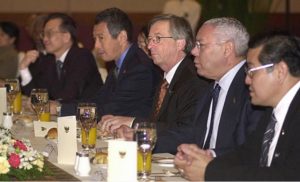 Secretary of State Colin Powell stated that the Core Tsunami Group was to be disbanded and folded and clubbed with the broader United Nations led Relief Operations. In a Tsunami Relief Conference in Jakarta, Secretary Powell stated that
Secretary of State Colin Powell stated that the Core Tsunami Group was to be disbanded and folded and clubbed with the broader United Nations led Relief Operations. In a Tsunami Relief Conference in Jakarta, Secretary Powell stated that 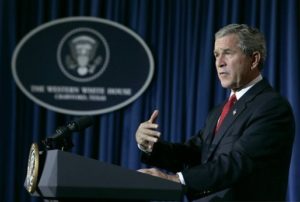 Soon after the Earthquake and Tsunami crisis, humanitarian reliefs by countries, viz., US, India, Japan, and Australia started to help the 13 havoc-stricken countries. The US initially promised $ 35 Millions in aid. However, on 29
Soon after the Earthquake and Tsunami crisis, humanitarian reliefs by countries, viz., US, India, Japan, and Australia started to help the 13 havoc-stricken countries. The US initially promised $ 35 Millions in aid. However, on 29 At 7:59AM local time, an earthquake of 9.1 magnitude (undersea) hit the coast of Sumatra, an Indonesian island. As a result of the same, massive waves of Tsunami triggered by the earthquake wreaked havoc for 7 hours across the Indian Ocean and to the coastal areas as far away as East Africa. The infamous Tsunami killed around 225,000 people, with people reporting the height of waves to be as high as 9 metres, i.e., 30 feet. Indonesia, Srilanka, India, Maldives, Thailand sustained horrendously massive damage, with the death toll exceeding 200,000 in Northern Sumatra’s Ache province alone. A great many people, i.e., around tens of thousands were found dead or missing in Srilanka and India, mostly from Andaman and Nicobar Islands of Indian territory. Maldives, being a low-lying country, also reported casualties in hundreds and more, with several non-Asian tourists reported dead or missing who were vacationing. Lack of food, water, medicines burgeoned the numbers of casualties, with the relief workers finding it difficult to reach the remotest areas where roads were destroyed or civil war raged. Long-term environmental damage ensued too, as both natural and man-made resources got demolished and diminished.
At 7:59AM local time, an earthquake of 9.1 magnitude (undersea) hit the coast of Sumatra, an Indonesian island. As a result of the same, massive waves of Tsunami triggered by the earthquake wreaked havoc for 7 hours across the Indian Ocean and to the coastal areas as far away as East Africa. The infamous Tsunami killed around 225,000 people, with people reporting the height of waves to be as high as 9 metres, i.e., 30 feet. Indonesia, Srilanka, India, Maldives, Thailand sustained horrendously massive damage, with the death toll exceeding 200,000 in Northern Sumatra’s Ache province alone. A great many people, i.e., around tens of thousands were found dead or missing in Srilanka and India, mostly from Andaman and Nicobar Islands of Indian territory. Maldives, being a low-lying country, also reported casualties in hundreds and more, with several non-Asian tourists reported dead or missing who were vacationing. Lack of food, water, medicines burgeoned the numbers of casualties, with the relief workers finding it difficult to reach the remotest areas where roads were destroyed or civil war raged. Long-term environmental damage ensued too, as both natural and man-made resources got demolished and diminished.
No responses yet